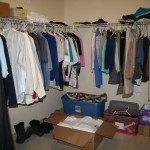Seafarers and The International Seafarer Center (ISC), GA
Did you know the ocean and sea covers 7/10 of the earth’s surface? Post World War II immense changes took place in the way businesses shipped products; not to mention the design and construction of ships. Passenger ships fell and bulk carriers rose. This was due partly because of the Suez Canal closing in 1956. Ships now go around Cape of Good Hope, South Africa.
Bulk carriers were purposely designed for rapid unloading and loading of their specific cargo; ore, grain, cars, etc. Another type of “bulk” carrier is the container ship. These ships use metal containers to pack the cargo to load and unload at dockside. Usually, the metal containers are the same size. This helps transporting cargo from shifting in bad storms and heavy weather. This method helped decrease the possibility of ships sinking at sea; which was a known problem.
War experience in landing tanks also paid off; especially landing on enemy coasts. They used a new method called roll-on, roll-off ferries (RORO). Prior to using RORO method, cranes lifted off cars at the docks with a 4-point chain bridle. Then they lowered the cars into the holding section of the ferry. The first RORO ferries drove cars onboard via a ramp then through the stern doors.
Did you also know without the use of ships our standards of living would be radically different?
Famous Cargo Built Ships
1845 – Rainbow – American Sailing ship, considered the first true clipper. She had standing success in the China trade. Her measurements were 1,043 tons, 159 ft (48.5m) in length, and a beam of 31 ft (9.5m).
1863 – Taeping was a British Tea Clipper carried the first of season’s tea crop. In 1866, she participated in a famous race from Foochow to England. Her measurements were 767 tons gross, 184 ft (56m) in length, and a beam of 31 ft (9.4m).
1868 – Thermopylae – last and most famous British Tea clipper. Built for China Tea Trade, she sailed outward passage to Australia with mixed cargo. In 1882 she carried Australian wool. This ship weighed 991 tons, had a length of 212 ft (64.6m) and beam of 36 ft (11m) with 80 ft (24.4m) main-yard.
1890 – France (1) – first built by Henderson and Son of Glasgow, Scotland for A.D. Bordes (French shipping line). She was made of two steel-hulled, 5 masted barks and known as the largest sailing ship of their day. She was equipped with steam winches for cargo handling for the South American nitrate trade. France 1 weighed 5,900 tons dead-weight. She was 361 ft (110m) in length and had a 49 ft (14.8m) beam, two steel decks with double bottom. 1902 – Thomas W Lawson – constructed in Quincy, MA consisting of 5,218 gross tons, 375 ft (114.5m) length, and a 50 ft (15.2m) beam. Each mast was 195 ft (59.4m) tall. Though built for coastal trade she proved difficult to handle.
1911 – France (2) – second bark launched in Bordeaux France. This ship’s design was for nickel and iron trade from New Caledonia, Southwest Pacific. She was the largest sailing ship constructed at 8,000 tons deadweight, 419 ft (127.7m) in length and a 56 ft (17m) beam.
Colonel’s Island, GA
Fast forward to current day. The Georgia Port Authority receives between 200 and 300 deliveries monthly. These include: boats, yachts, and ski boats during January through July. In Brunswick, GA their niche market is automobiles, grain, and break-bulk. Break-bulk is anything shipped as a unit; cars, bales, cartons, pallets, etc otherwise known as non-containerized general cargo.
In 2014, the Port Authority in Brunswick, alone, handled 674,000 cars. “We’re the number one import auto facility in the U.S.”, says Bill Dawson, General Manager Operations Brunswick and Barge Facilities. “We average 45 car ships a month.”
During my first visit to Colonel’s Island they had three car ships in port. That’s 150 longshoremen to unload the vessels, take them to a point of rest, and then drive back to the cars in a van.
On the export side a ship carries 8,000 cars. A drop of roughly 2,000 cars off the ship might take place. Then a pickup of 2,000 more cars could take place. Ships need to book a month in advance of a schedule, and then as they get closer they need to define more. Within 48 hours they need to show their hand, where they are and when they’re coming. After the ship receives permission to dock, the GA PA notifies the tug pilot. The tug picks up the ship at 0300 hours for a 0700 dockside arrival. Next the ship hires the stevedore who hires the labor to unload/load the ships. International longshoremen work on break-bulk shipments.
“Our business is regulated quite hard by customs”, says Dawson. “You need more than a TWIC (transportation worker’s identification card) here. We have about 13,000 seafarers that move through the ports every year; all operating on visas. This limits them, especially when customs comes through from time to time. They lock the gates, check everyone’s ids, bring dogs, smell cars, and all the equipment.” Seafarers love going to Brunswick, though, thanks to the International Seafarer Center (ISC).
International Seafarer Center
Famous British Author, Rose George of “Ninety Percent of Everything”, calls seafarers the invisible industry. Ms. George wants to cure herself, and us, of what the chief of the British Navy has called “sea-blindness.” “Seafarers are the unseen workforce that has one of the toughest jobs in the world,” says Valerie Crumpton, Executive Director of ISC. They are also known by many different titles; merchant mariners, seamen, and/or sailors. The industry is comprised of fishermen to big cargo ships and car ships transporting cars; Komatzo and Caterpillar too. On my second visit to Brunswick I had the pleasure of meeting Valerie Crumpton and tour the center. Unfortunately, the USCG boarded the car ship when it docked at Colonel’s Island. This meant a more extensive inspection which prevented anyone from getting on or off the ship. Last year, the Port of Brunswick had 16,000 seafarers come through.
The ISC has been around for over 30 years. It has over 100 volunteers. Between 40 and 50 volunteers actively help seven days a week when ships come into town. Volunteers do a wide range of duties. They perform ship visits. Talk to crew members to see if everything is okay. Learn about the crew (ethnicity, kind of cargo carrying). Volunteers also drive seafarers with visas and shore passes around to the store, doctors, etc. If they have issues the volunteers are there to listen and help in whatever way they can.
The center has two hospitality centers and community stores to provide seafarers for their immediate needs. The store carries toiletries, “comfort” foods for the Filipinos, Asian biscuits and other snacks, juices such as coconut and mango, plus souvenirs (t-shirts, hats, cups, etc). Other things the center provides is clothes free of charge, wifi to enable communication with their loved ones tens of thousands miles away. Computer use for those without laptops, phone cards and phone access to make international calls for those without cell phones. Last, but not least they provide a chapel. “Some seafarers like to come here and sit down to be quiet”, says Crumpton. “On the ships they don’t get an opportunity to be at a chapel. The majority of the merchant mariners are Christian, especially from the Philippines where they are Catholic.” One of Crumpton’s favorite stories she likes to share is about a seafarer who was getting married. He needed to find a suit. “He came in here,” Crumpton says. “He found a jacket and pant suit. Tried them on and said it was a perfect fit. So it was meant to be.”
As you walk around the main hospitality center you’ll see a library, big living room with pool table, clothes closet, den with TV and guitars, conference room, chapel, medical exam room, computer and telephone rooms. My favorite was the wall with the different currencies that seafarers left and pins to represent the countries they come from.
For more information about the center visit their website at: http://seafarerscenter.org.






